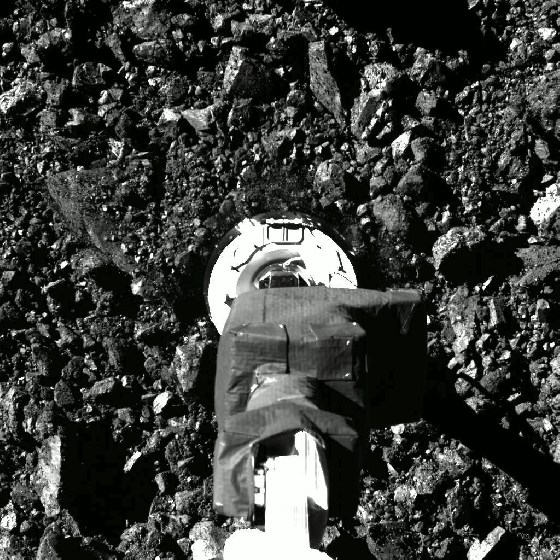The permanently shadowed craters at the moon’s south pole are both the first and last place lunar astronauts would want to spend their time. The appeal is that they have generous deposits of water ice, a critical resource for any potential lunar base (ice means drinking water, yes, but it also means oxygen that can be used for synthesizing atmosphere and hydrogen for rocket fuel). But then there’s that business of the permanent shadows. It gets awfully cold on an airless body if there’s no sunlight—about -250º C (-418º F), in this case—and working in permanent darkness is no easy business, either.
It would be a lot handier if there were significant amounts of water on what amounts to the more temperate parts of the moon: the near and far sides where any one spot is brilliantly lit for two full weeks out of every month. Well, good news: NASA announced today that it has discovered water in just such a site: Clavius Crater, located between 50 and 75 degrees latitude in the southern lunar hemisphere on the near side of the moon.
“Water is extremely critical for deep space exploration,” said Jacob Bleacher, NASA’s chief scientist for human exploration and operations, at a Monday press conference. “We know that it exists in some of the darkest and coldest craters, so finding it in places that are easier to reach is very helpful for future exploration.”
The new discovery was made by the Stratospheric Observatory For Infrared Astronomy (SOFIA), a 2.7 meter (9 ft.) telescope mounted inside a retrofitted Boeing 747, which flies at altitudes of 13,700 m (45,000 ft). That’s above 99.9% of atmospheric water vapor—helpful, as even a little vapor blocks some frequencies, leaving earthbound telescopes blind in certain parts of the infrared spectrum. In this case, widening that frequency aperture revealed a lot.

Observatories have previously detected hydrogen’s chemical fingerprint in the lunar “regolith,” or soil. The assumption was that it was in the form of hydroxyl, which is made of one oxygen atom and one hydrogen atom—a stable molecule that would naturally form in a regolith where oxygen is also present. It was at least theoretically possible that there were two atoms of hydrogen—meaning H2O, or water—but earth-based telescopes can’t detect that. SOFIA can, and over the course of two years of observations, the NASA team hit the molecular jackpot, finding the precise fingerprint of water scattered across Clavius.
But future astronauts may not be able to get at the newly discovered lunar water so easily. For one thing, it’s scarce—about 100 to 400 parts per million, the equivalent of 0.35 liters (12 oz.) of water in a cubic meter of lunar soil. Moreover, the water molecules are not interacting with one another in ways that would produce a discrete quantity of ice or water. Instead, they are formed by violent collisions of micrometeorites. Those collisions provide the heat to convert hydroxyl molecules to water molecules, but those molecules are then entrained within microscopically small glass beads also created by the collisions.
“If the water is trapped in glass beads, it might require too much energy to extract it,” said Bleacher. What’s more, once the molecules are freed, they might disperse or be destroyed. “Are we going to be disruptive to the water to the point that we just can’t use it?” asked Paul Hertz, director of NASA’s astrophysics division.
The scarcity of the water and the difficulty of the extraction might simply drive astronauts back to those shadowed craters—which are currently the target spots for NASA’s plans to have Americans back on the moon by 2024, via the Artemis program. But that doesn’t mean the SOFIA findings are merely of academic value. Finding water in one unexpected lunar site means it could well be in plenty of others. Every place it’s detected simply widens the potential footprint for future human exploration—and even, perhaps, settlement.


